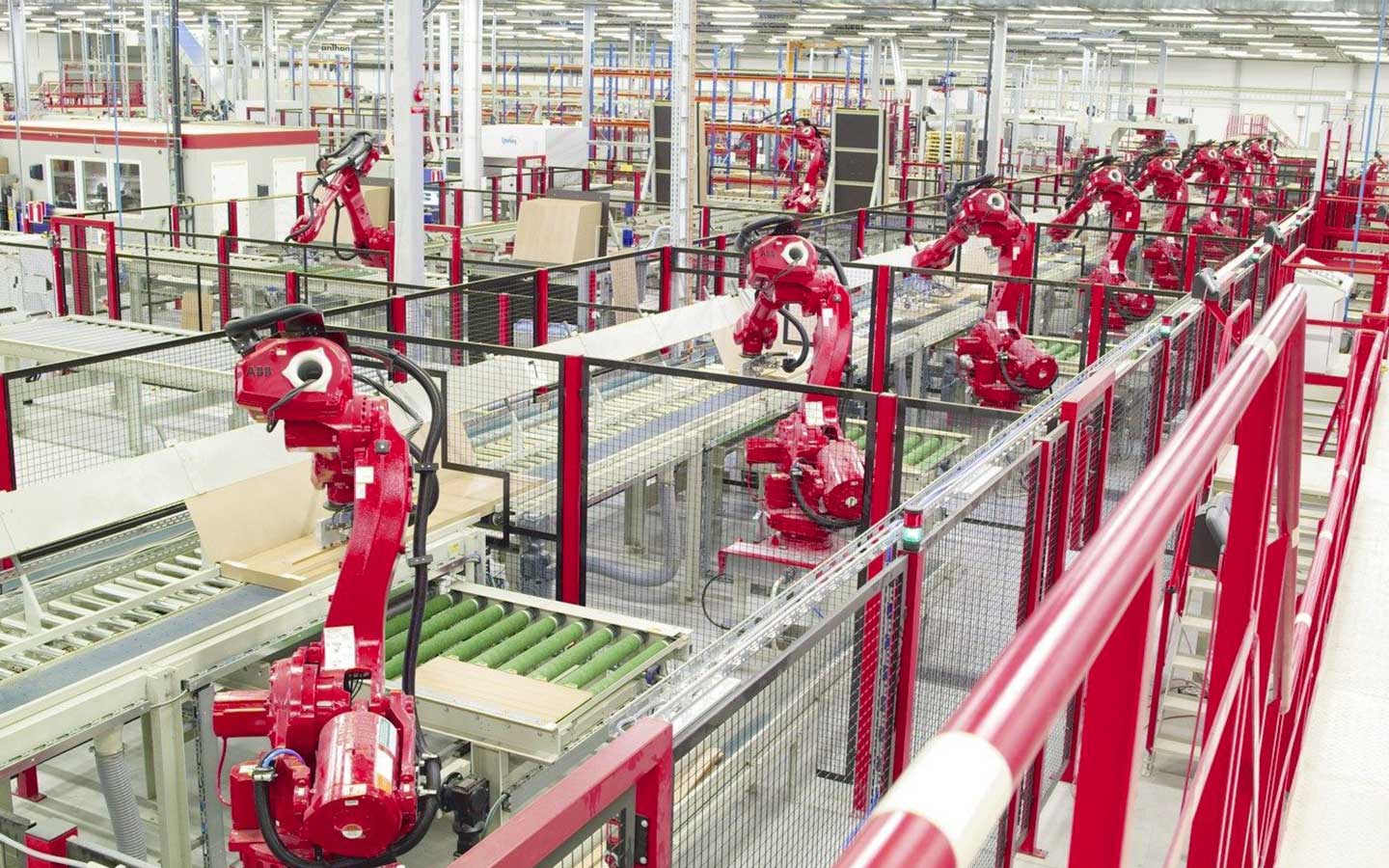Last year Anthon celebrated 150 years in business. Managing director Ove Lange proposes that staying in the race the next 150 will be about driving demand in Asia and beefing up engineering competence.
Somewhere in the Anthon headquarters, 100-year-old blueprints for a project in India sti ll exist. Once in a while, they are taken out for study when a call comes in about maintenance. These calls are rare, but such is the durability of Anthon’s equipment, and the relationship the Flensburg company has with its customers. Anthon has long had a stronghold in Asia. The first China offi ce can be traced back to 1920. Riding on the booming panel and furniture sector in recent history, 49 lines have been delivered in China in eight years. The relationship with Southeast Asia is also not new. Amongst others, panel giants such as Dongwha, Metro-Ply, Evergreen and Vanachai in Thailand have bought equipment since the 1990s.
All in all, Anthon holds an 80% share for the panels sector in Asia and China, claims managing director Ove Lange. He personally visits customers in Thailand, Vietnam, and Malaysia every other month to establish contact and negotiate new projects. “From about two years ago, projects for board production in Southeast Asia have accelerated, and there has been an increase in demand for finishing lines as a result,” says Mr Lange. “Today we are also growing in the furniture production sector in the Philippines and Indonesia.” Anthon plans, builds and connects turnkey systems for panel production. All projects are custom-designed, transforming entire factories into a fluid high-performance machine run by robotics round-the-clock. The company is also dedicated to building automated lines for furniture production.
THE AGE OF AUTOMATION
When asked to predict trends for the next five years, Mr Lange says it is the rise of efficiency. Here, this means process consolidation and replacing standard standalone machines with one fully automated line in furniture manufacturing. Smaller factories will turn to IT solutions—such as integrating a packing line with barcode scanners, printers or automated quality control systems—to streamline operations into one seamless fl ow. While many business owners have yet to place orders, the age of automation will arrive when the cost of labour hikes over returns on investment. To meet this need, Anthon is building core competencies in IT infrastructure. All software solutions are developed in-house and adapted specifically to a customer’s factory as much as possible. In addition, Mr Lange observes that Asian companies are getting better at starting up projects. Before, only the owners were involved in the negotiations. Now the discussion includes field experts who manage just one technical area in a line. The customer’s role is also equally, if not more important. Aft er the initial setup, the systems must be run by good technicians. All these details are first ironed out before the contract is formally signed. “The more information we have, the better the project will run,” he says. “This also means production and quality standards in this region are rising. Where before things were done manually, now the new systems implemented give little room for error.” However in the coming year, panel producers in Asia will experience a few hiccups in its growth path. The limited availability of raw materials in Malaysia, Thailand and Vietnam is a concern; Turkey’s rise as a key panels supplier to the Middle East is edging out Southeast Asian players; China’s slowdown too, has stung stakeholders throughout the supply chain.
BUILDING ENGINEERING COMPETENCE
While market fluctuations are beyond control, the key to staying afloat the next 150 years lies in engineering precision. “Although aft er-sales servicing or spare parts may be a quick win, it is not a sustainable one,” says Mr Lange. The needs of a factory such as panel sizing systems, automatic packing lines, cutting optimisation and visualisation of the logistics processes may be similar, but it is the know-how on introducing new soft ware to work with existing ones that makes Anthon stand out. “It is easy to produce 50 standard machines but not 50 made-to-order lines. By the ti me someone figures out how to replicate it, we are already way ahead with the next technology. There is no equal on the market.” The company, he says, is in a good position to succeed: 140 employees, a big enough pool to tap on each individual’s expertise, small enough to respond swift ly to the market’s changing demands. In addition, the team builds experience from one project to another and gains new insight from people they meet all the ti me. Finding joy in everyday work is part of success too. Mr Lange adds, “I’m experiencing cultural challenges from China to Europe, working on very diverse projects and meeting lots of different people. It is a very personal business.”
